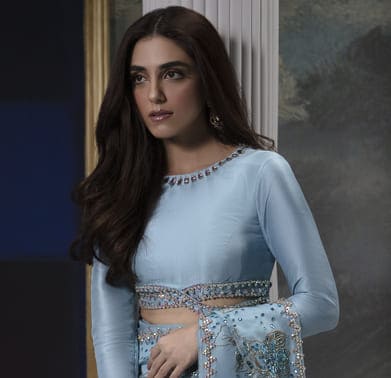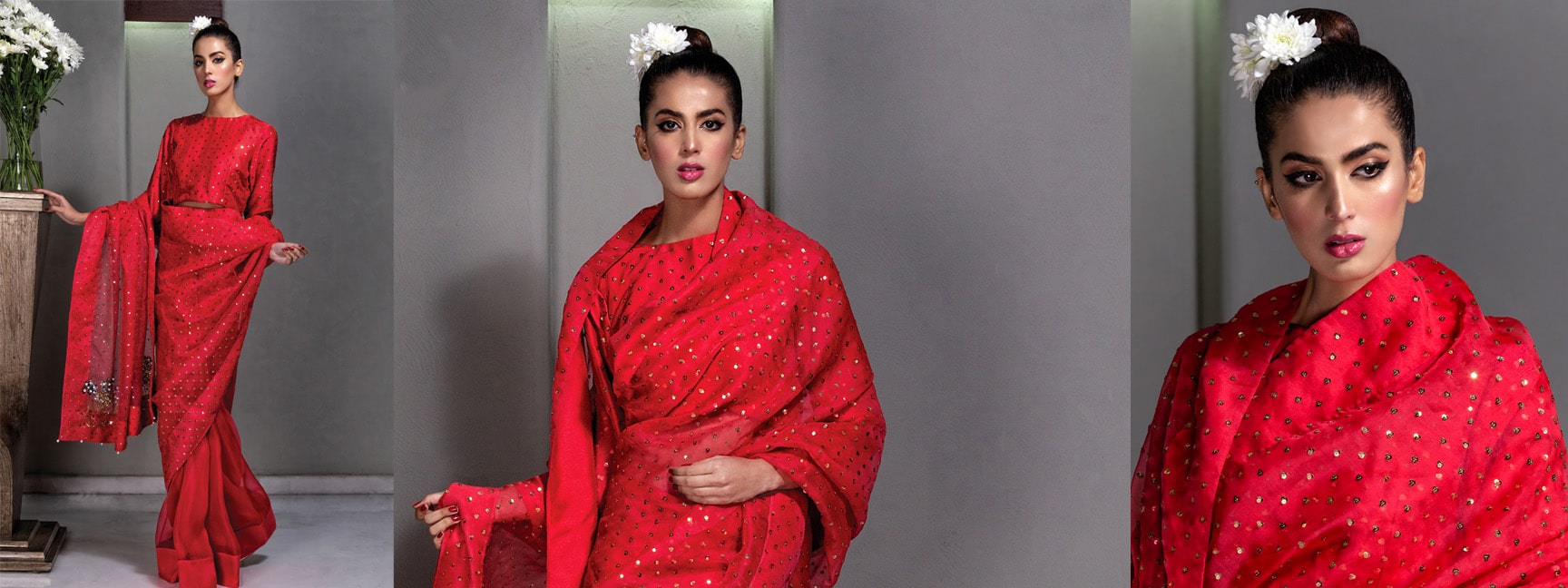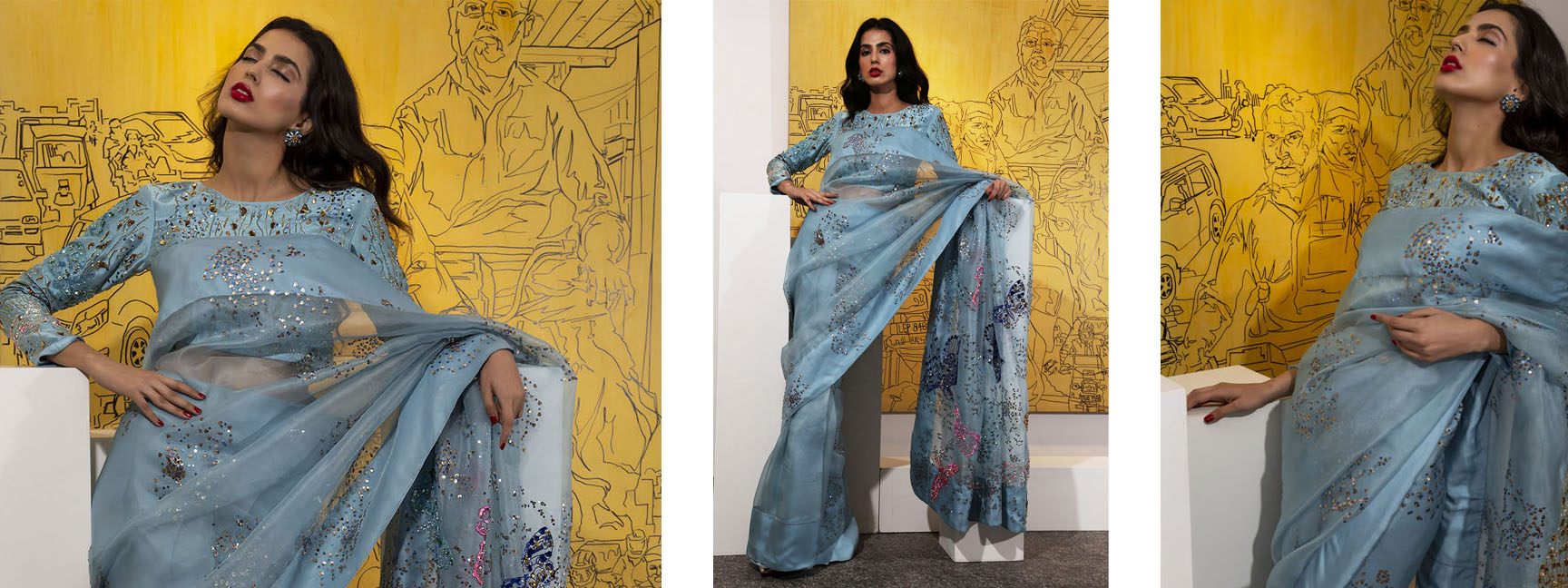Saree Dress - What to Know about History and Cultural Significance in Pakistan?

Saree is a traditional dress worn by women in many countries, including Pakistan. It is a long piece of cloth that is draped around the body, with one end of the cloth tucked into the waistband of the skirt or petticoat. Saree is not just a piece of clothing; it is a symbol of tradition, culture, and identity in many countries. One such country where the saree dress holds immense cultural significance is Pakistan. The saree has a rich history in Pakistan, and it is considered an important part of the country's cultural heritage. The history and cultural significance of the saree dress in Pakistan is a fascinating subject, and in this article, we will explore it in detail.
Origins and History of Saree Dress in Pakistan:
The saree is believed to have originated in the Indian subcontinent, and its history can be traced back to the Indus Valley Civilization, which existed around 2800 BCE. The earliest evidence of saree can be found in the ancient text Vedas, which was written between 1500 and 1000 BCE. The Vedas describe the saree as a garment worn by women in ancient India.
The history of saree in Pakistan can be traced back to the Mughal era which lasted from the early 16th century to the mid-19th century. During the Mughal rule, sarees were patronized by the nobility and were considered a symbol of wealth and status. The Mughal emperors and their wives were known to wear richly embroidered and embellished sarees made of silk and other luxurious fabrics such as brocade and muslin.

Evolution of Saree Dress in Pakistan:
During the British colonial rule in the subcontinent, the saree underwent significant changes. The British introduced new textile technologies, which led to the production of cheaper and more accessible fabrics. As a result, sarees made of cotton and other lightweight fabrics became popular among the masses.
When tracing the evolution of saree dress in Pakistan, we have observed how much the sarees became popular among everyday citizens, prominent movie celebrities, and the first ladies accompanying their husbands on official tours as representatives of Pakistan, as well as hosting foreign dignitaries and officials from various nations.
However, the saree dress had been outlawed during the Islamization era of General Zia-ul-Haq from 1977 to 1988. After this era, the shalwar kameez became popular among the masses as fashion designers worked on different types of varieties of this dress.
The revival of the saree dress in recent years in Pakistan has been prominently showcased by Pakistani models and celebrities from the TV drama industry, highlighting the beauty and elegance of this traditional attire on various platforms. This revival can be attributed largely to the liberal environment fostered by General and President Pervez Musharraf during his tenure from 1999 to 2007. The liberalization policies resulted in increasing the number of numerous private channels, granting access to a wider range of foreign TV content, including a plethora of TV serials and movies from our neighboring country, India.
The popularity of Indian TV serials and Bollywood movies played a pivotal role in inspiring Pakistani designers to create and revitalize sarees. The return of sarees extends beyond models, TV, and movie actresses, as ordinary Pakistani women have also embraced this attire, incorporating it into their regular wardrobe.
In the 20th century, the saree underwent further changes. The traditional saree was replaced by the modern saree, which was easier to wear and more comfortable. The modern saree dress is made of lightweight fabrics and is draped around the body in a simpler way than the traditional saree.
Cultural Significance of Saree Dress in Pakistan:
The saree dress is an important part of Pakistani culture and tradition. It is worn on various occasions, including weddings, engagements, festivals, and religious ceremonies. The saree is considered a symbol of femininity, grace, and elegance, and it is often associated with the traditional values of the country.
In Pakistani weddings, most often, the bride and her family wear beautiful and intricately designed sarees, while some prefer to wear traditional lehngas and shararas. The sarees are usually made of silk or other luxurious fabrics and are embellished with embroidery, sequins, pearls, etc.
Apart from weddings, sarees are also worn on religious occasions and festivals, such as Eid, Diwali, and Holi. During Eid, Pakistani Muslim women wear colorful and vibrant sarees with intricate embroidery and embellishments. While, the minority Hindu women also wore sarees during their religious festivals, such as Diwali and Holi.

Regional Variations of Saree Dress in Pakistan:
Pakistan is a diverse country and each of the provinces has its unique styles of saree. Here are some of the famous sarees from different regions of Pakistan.
- Sindhi Ajrak Saree: It is a traditional saree dress from the Sindh province of Pakistan. It is made of cotton and is known for its rich, deep blue color. The saree is usually printed with intricate patterns and designs using natural dyes.
- Balochi Saree: It is a unique saree style from the Balochistan province of Pakistan. It is made of silk and is usually embroidered with silver or gold thread. The saree is known for its bright colors and intricate embroidery, which depicts the region's rich cultural heritage.
- Punjabi Saree: It is a traditional saree style from the Punjab province of Pakistan. It is made of cotton or silk and is usually printed with bold, vibrant colors and patterns. The saree is often paired with a colorful dupatta, which adds an extra layer of elegance and beauty.
- Kashmiri Saree: It is a traditional saree style from Kashmir. It is made of fine silk and is known for its intricate embroidery and embellishments. The saree is often paired with a shawl, which adds an extra layer of warmth and elegance.
Conclusion:
The saree holds a significant place in the cultural heritage of Pakistan. It has a long and rich history, evolving from the Mughal period to the present day. The saree represents tradition, femininity, and grace and is worn on various occasions, including weddings, festivals, and religious ceremonies. The regional variations of saree in Pakistan reflect the country's diverse cultural heritage. In short, the saree is a symbol of beauty, elegance, and grace, and it will continue to hold immense cultural significance in Pakistan for generations to come.













